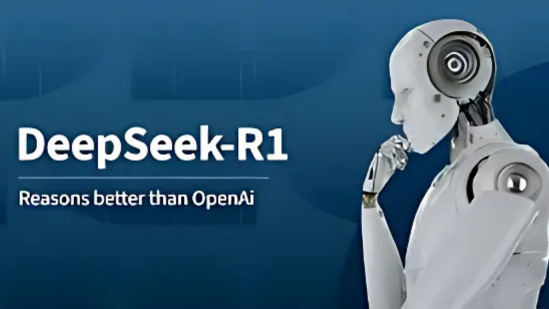
In a big move for artificial intelligence development, China’s DeepSeek has launched a new and improved version of its R1 reasoning model. This update is being talked about as a major step forward in AI reasoning, with better performance in logical tasks, math problems, and even computer coding. The new version is designed to compete with some of the world’s top AI models, including those created by OpenAI, Google DeepMind, and Anthropic.
The DeepSeek R1 reasoning model is an artificial intelligence system that can think and respond like a human in areas such as problem-solving, logic, and learning from instructions. DeepSeek has already gained attention in the tech world for trying to build a model that goes beyond just answering questions. With this new update, it hopes to improve how AI handles reasoning tasks, especially when things get complex.
The updated R1 model was built using a massive amount of data, including scientific research papers, mathematical datasets, coding repositories, and logic puzzles. This helps the model better understand deep concepts rather than just repeat what it has seen before. DeepSeek claims the R1 model can now reason through problems instead of simply providing surface-level answers.
One of the biggest improvements is how the R1 model handles math problems. In older models, AI often struggled with multi-step equations or advanced concepts like calculus. But with this new upgrade, DeepSeek R1 can solve complex math problems with higher accuracy. This is useful for students, researchers, and professionals who need help with mathematical concepts.
Another strong feature of the updated DeepSeek R1 is its coding ability. The model can now understand programming questions and generate code in multiple languages, such as Python, JavaScript, Java, and C++. This could be a huge help for software developers, especially when it comes to debugging, code completion, or learning a new programming language.
DeepSeek has also focused on improving the model’s ability to understand context. This means the AI can now follow long and detailed instructions better than before. It’s also less likely to get confused by tricky questions. The model performs well in benchmark tests like GSM8K for math, HumanEval for coding, and MMLU for general knowledge and logic. According to DeepSeek, their R1 update scored over 80% on GSM8K and made significant gains in HumanEval tasks, showing its potential in real-world applications.
To train the R1 reasoning model, DeepSeek used a powerful combination of supervised fine-tuning (SFT), reinforcement learning from human feedback (RLHF), and chain-of-thought training. This training strategy helps the model think step-by-step, especially in complicated tasks like solving puzzles, writing essays, or answering legal and technical questions.
In terms of accessibility, DeepSeek has made the base model of R1 open-source under an Apache 2.0 license. This means developers and researchers around the world can use, modify, and build on it without any licensing fees. However, the most advanced versions are still available only through selected partners or under private licensing agreements.
This approach reflects a growing trend in AI development, where some companies open-source part of their models to encourage community feedback and innovation, while keeping the most powerful versions protected. DeepSeek’s decision to open-source the base model is expected to help startups, academic institutions, and independent developers test and improve AI applications without massive costs.
Another reason why this update matters is because of the rising competition between the US and China in AI technology. Companies like OpenAI, Google, and Meta in the U.S. are pushing hard to build smarter AI, and China wants to stay in the race. DeepSeek is one of the leading players in China’s AI ecosystem, and the R1 update shows how serious they are about competing on the global stage.
The Chinese government has also supported companies like DeepSeek as part of its larger vision to become a global AI superpower. By promoting high-quality research and encouraging companies to build large language models (LLMs), China hopes to reduce its dependence on foreign technologies. The launch of the R1 update is a key part of this larger national strategy.
While the update has received a lot of praise, experts have also shared some concerns. Like other large AI models, DeepSeek R1 still faces problems with hallucinations—that is, making up false or incorrect information confidently. This remains a challenge for all AI companies around the world. DeepSeek says it is working on solutions to reduce hallucinations and improve reliability over time.
The model’s creators have promised regular updates, safety testing, and bias reduction, especially since AI can sometimes reflect harmful or unfair patterns seen in its training data. Ethical development remains a key concern, and DeepSeek has released a set of guidelines to ensure responsible usage of the R1 reasoning model.
As part of the rollout, DeepSeek has provided a demo interface for users to test the updated R1 model on their official website. Developers can sign up for API access, and there are tutorials to help new users learn how to use the system. The platform is designed to support various use cases such as education, customer service, finance, scientific research, and even legal assistance.
According to early testers, the updated DeepSeek R1 model works smoothly in areas like writing essays, solving math problems, translating text, writing code, and even generating business plans. This makes it a potential tool for students, freelancers, startups, and businesses looking to automate intelligent tasks.
The user interface is clean and easy to use. You can enter your query in simple language, and the model gives fast and detailed replies. It can also remember previous conversations, allowing for multi-turn dialogue. This is especially useful in research or customer support scenarios.
So, what does this mean for the future of AI? The release of the DeepSeek R1 update shows that AI is getting smarter, more helpful, and more widely available. As models become better at reasoning, logic, and code generation, their use in everyday life will grow rapidly. From education to healthcare, from business to governance, AI tools like R1 will play an important role in helping humans make better decisions.
For AI enthusiasts, tech developers, and researchers, DeepSeek’s new version offers an exciting new option. Whether you’re building a chatbot, creating AI-powered learning tools, or just exploring how reasoning models work, the updated R1 system is worth trying.The DeepSeek R1 reasoning model update is a big step in China’s AI journey. With better math and coding abilities, improved logic understanding, and an open-source base model, it promises to support innovation across the world. While challenges like hallucination and bias remain, DeepSeek is taking clear steps toward ethical and responsible AI development. As more people start using this new version, we can expect many new applications, tools, and services that make the most of this intelligent technology.































